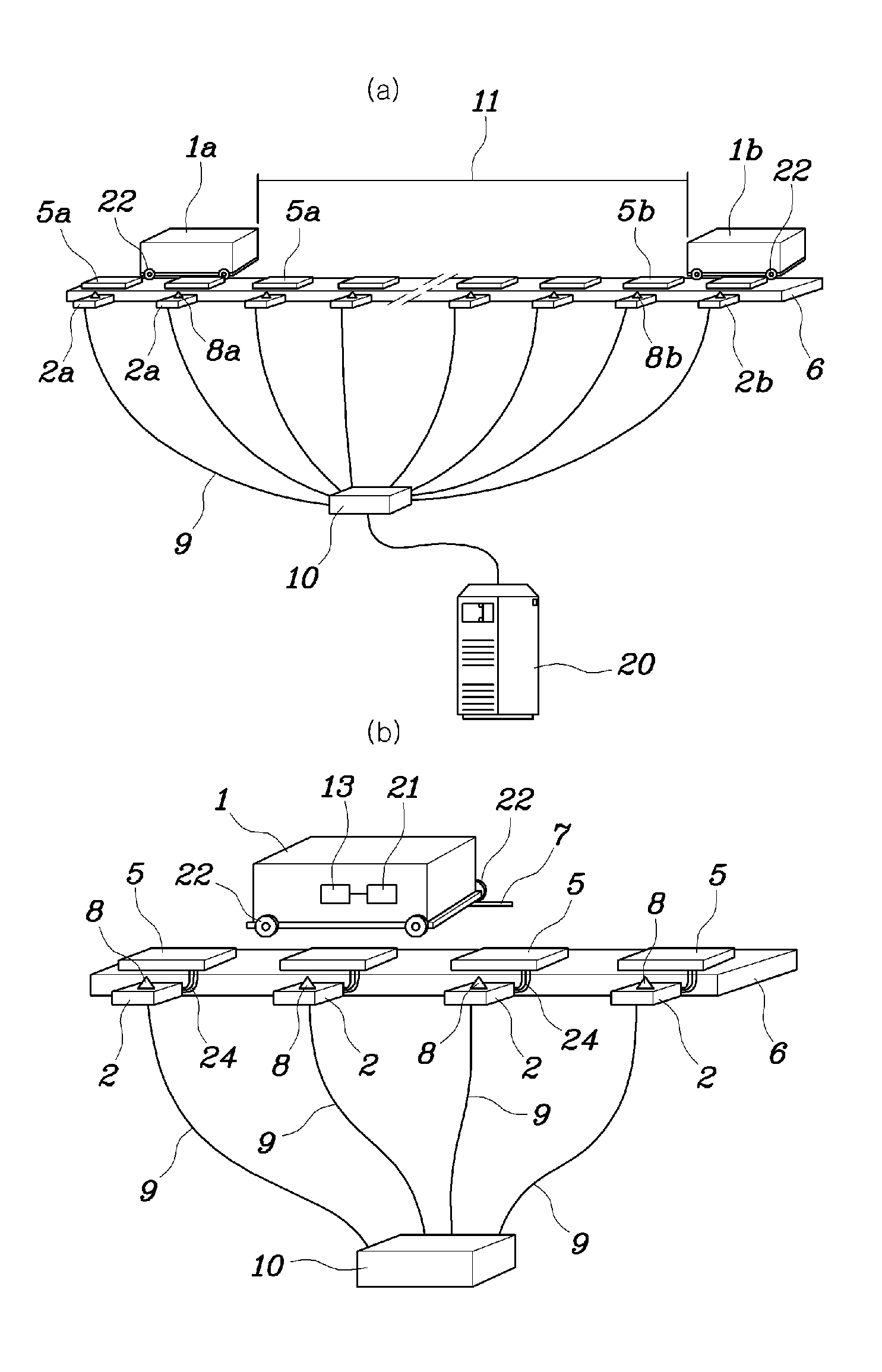Method and System for Merge Control in an Automated Vehicle System
a technology of automated vehicle system and merge control, applied in vehicle position/course/altitude control, process and machine control, instruments, etc., can solve the problems of safety, efficiency, and merge being a potential capacity bottleneck, and the construction cost of the prt system is much lower than that of alternative solutions
- Summary
- Abstract
- Description
- Claims
- Application Information
AI Technical Summary
Benefits of technology
Problems solved by technology
Method used
Image
Examples
Embodiment Construction
[0051]In the following description, reference is made to the accompanying figures, which show by way of illustration how the invention may be practiced.
[0052]FIG. 1 schematically shows an example of a part of a personal rapid transit system with in-track type linear induction motor. The personal rapid transit system comprises a track, a section of which is shown in FIG. 1 designated by reference numeral 6. The track typically forms a network, typically including a plurality of merges and diverges. The personal rapid transit system further includes a number of vehicles, generally designated by reference numeral 1. In this example, the vehicles run on wheels along a track by the propelling power of linear induction motors (LIM). Normally each vehicle may carry 3 or 4 passengers, but it is understood that a vehicle can carry more or less passengers. FIG. 1a shows a track section 6 with two vehicles 1a and 1b, while FIG. 1b shows an enlarged view of a single vehicle 1. Even though only ...
PUM
 Login to View More
Login to View More Abstract
Description
Claims
Application Information
 Login to View More
Login to View More - R&D
- Intellectual Property
- Life Sciences
- Materials
- Tech Scout
- Unparalleled Data Quality
- Higher Quality Content
- 60% Fewer Hallucinations
Browse by: Latest US Patents, China's latest patents, Technical Efficacy Thesaurus, Application Domain, Technology Topic, Popular Technical Reports.
© 2025 PatSnap. All rights reserved.Legal|Privacy policy|Modern Slavery Act Transparency Statement|Sitemap|About US| Contact US: help@patsnap.com



